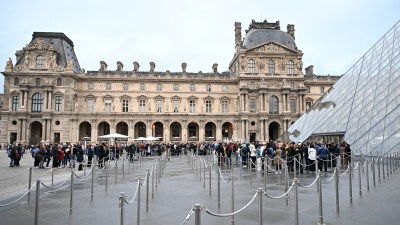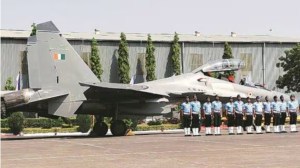Images of hope in Gujarat come from outer space — water in arid Kutch
VADODARA, FEBRUARY 6: Perhaps, Nature could be compensating for the death and the devastation it's wrought in Gujarat. Satellite pictures ...

VADODARA, FEBRUARY 6: Perhaps, Nature could be compensating for the death and the devastation it’s wrought in Gujarat. Satellite pictures taken after the earthquake have confirmed the presence of water around the Rann of Kutch where earlier it did not exist. In other words, the quake seems to have revived a channel of water lying dormant for countless years.
The finding has triggered off excitement among the scientific community and although experts caution that extensive research is needed to find out what can be done with the water, they admit that possibilities are endless given the parched nature of the region.
News from the Epicentre
» Full coverage of the Gujarat earthquake
» Donate online for relief
Pictures taken by IRS-1D satellite on February 1, five days after the quake, show a large quantity of surface water in a zigzag channel leading to the Rann. Pictures taken before the quake confirm that water did not exist in these areas.
Director of the Gandhinagar-based Remote Sensing and Communication Application Centre T P Singh told The Indian Express today that the images clearly showed presence of abundant water and that carbon dating would be needed to find out how ancient the water was.
Indian Space Research Organisation’s Deputy Director (Remote Sensing Area) R R Navalgunde also confirmed the presence of surface water. He, however, said extensive study would be required to explain the phenomenon. It was possible that salt water always existed in a “contracted form” beneath the surface and might have squeezed out. He said ISRO hydrologists will study the salt and other contents of the water before arriving at any conclusion.
Navalgunde and Singh said it would be premature to say whether the water could be sourced to a distributory of the ancient river like the Indus or the mythical Saraswati. Singh said it was very possible that water trapped in the rocks could have come out through fissures in the earth.
Immediately after the earthquake, residents of a few villages around Nakhtarana had reported that fresh water had gushed out from few places. In an area yielding only saline water, this was treated as a kind of divine compensation amid the large-scale devastation.
Singh said IRS-1C and IRS-1D among themselves take, on an average, one picture every 13 days of a particular spot. The next picture was expected on February 14, he said adding a lot of government agencies would have to sit together to study the phenomenon and exchange data.
Some experts say that the quake could have brought to life channels of water long hidden for thousands of years. P P Patel, head of the geology department at MS University, said that the Rann of Kutch was a delta zone of ancient rivers like the Saraswati and Indus. The delta underneath contains zones of fresh and saline water. He said the area had a complex geology and underwent many changes over the last thousands of years.
The ancient delta, through constant ingress of the sea, was converted into what is now known as the Rann of Kutch-baked flatlands where nothing grows.
Pockets of fresh water enveloped in clay must have burst after the tremendous underground disturbances. It must have been a channel which has been activated by the quake. He, however, ruled out the possibility of the Indus having changed its course.
According to the head of the geography department at MSU, Jayashree De, some subterranean channel must have existed long ago. Since water gushed out in streams, it must still be at sub-surface level. If the water is tapped it can solve the drinking water scarcity faced by the region.





- 01
- 02
- 03
- 04
- 05


























